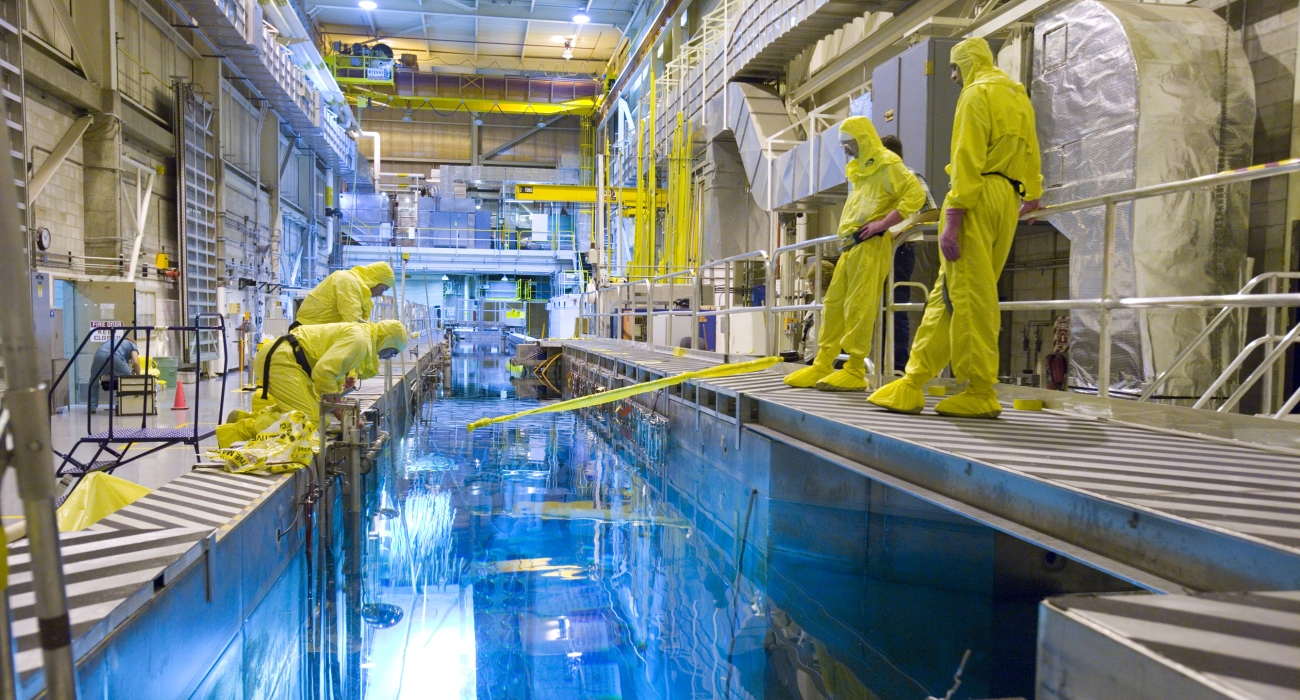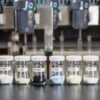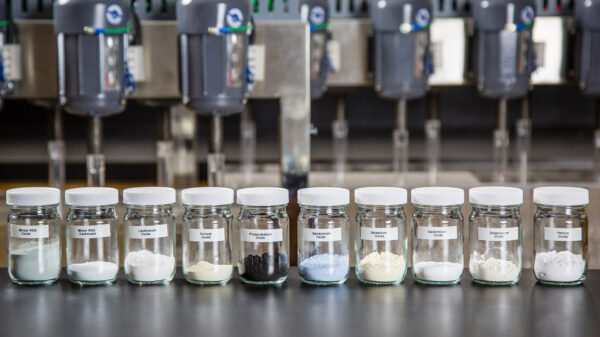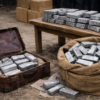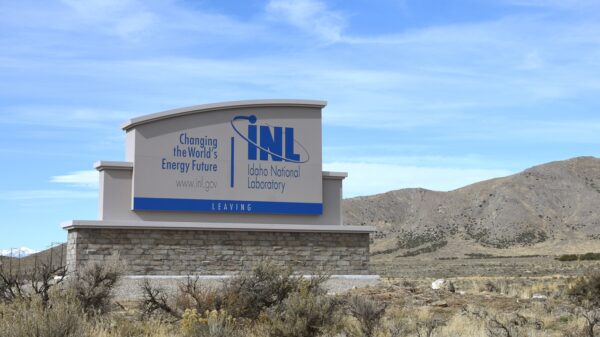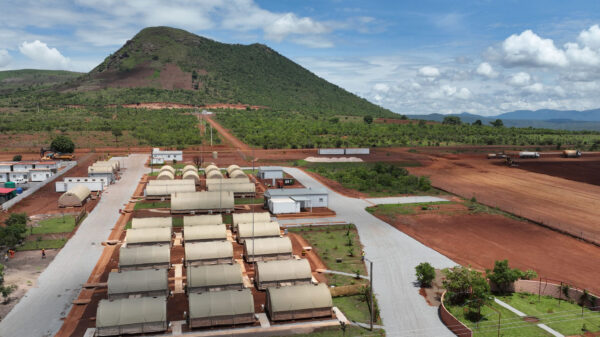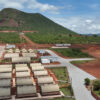The Idaho National Laboratory, one of the largest and most renowned nuclear research labs in the United States, has joined forces with a private rare earth exploration tech company to develop new methods of processing rare earths and move away from Chinese suppliers.
The lab announced on Monday it signed an agreement with US Critical Minerals Corp. to work on a process for carbonatite ore handling, preparation and extraction of the metals present in the ore.
Carbonatites are the primary source of niobium and other light rare earth elements (REEs) such as lanthanum, cerium, praseodymium and neodymium. The REEs are used particularly in manufacturing magnets for electronics and clean energy applications.
Other commodities produced from carbonatite-related deposits include phosphates, iron, fluorite, copper, vanadium, titanium, uranium and calcite.
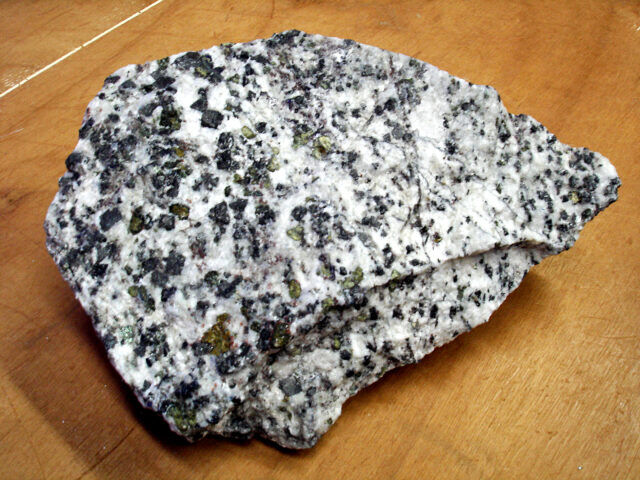
Carbonatite extracted in Jacupiranga in Sao Paulo, Brazil. The black minerals are magnetite, the white ones are calcite and the green ones are olivine. Photo by Eurico Zimbres via Wikimedia Commons.
Both parties are focused on developing methods for dealing with environmental issues related to mining and processing. The dependence on international sources of critical materials has pressed the United States government to develop new technologies that don’t depend on Chinese providers.
The Idaho National Laboratory is managed by Battelle Energy Alliance for the U.S. Department of Energy’s Office of Nuclear Energy. It is the country’s center for nuclear energy research and does research to reach specific goals related to energy, national security and the environment.
Both organizations will form technical teams to evaluate separation technologies. They will commission targeted research, development, demonstration, testing and evaluation of technologies to achieve targets provided by US Critical Materials.
“The U.S. has very little commercial rare earth processing. We need to be able to compete with and exceed China’s rare earth processing capabilities,” US Critical Materials President and former United States Geological Survey (USGS) rare earth commodities specialist Jim Hedrick said.
“This research agreement, and the tech that will be developed, will help advance U.S. rare earth processing proficiency.”
US Critical Materials is a private rare earth exploration company based in Salt Lake City, Utah. Its mineral deposits in Montana and Idaho are unique due to the high grades of rare earths, low levels of thorium and large numbers of surface carbonatites.
China is not playing by the same regulatory rules.@RepDonaldsPress says that for the sake of our national security, we cannot give China the upper hand in critical minerals. pic.twitter.com/agS8nx804R
— Oversight Committee (@GOPoversight) November 30, 2023
Read more: Biden-Harris administration invests US$32 million in rare earths and critical minerals
Inflation Reduction Act aims to decrease dependence on Chinese imports of rare earths
The global reliance on Chinese rare earth metals, including light rare earth elements such as lanthanum, cerium, praseodymium, and neodymium, has been a source of concern for the United States and several other countries.
China dominates the production of rare earth elements, accounting for a significant portion of the world’s supply. This dependence poses strategic and economic challenges, as these elements are critical components in the manufacturing of various high-tech products, including electronics, electric vehicles and renewable energy technologies.
The Inflation Reduction Act passed last year holds significant implications for the relationship between the United States and China, especially in the realm of clean energy technologies.
The act aims to decrease U.S. dependence on China by incentivizing domestic manufacturing of clean energy technologies and encouraging the localization of related supply chains. The act has prompted concerns from China’s Ministry of Commerce, particularly regarding provisions related to discriminatory subsidies for electric vehicles (EV), which are suspected of violating World Trade Organization principles.
Its coverage of subsidies within the clean energy sector includes restrictions on electric vehicles using batteries from designated “foreign entities of concern,” impacting China’s lithium-ion battery and EV industry.
Several U.S. companies are actively engaged in pioneering research methods for rare earth extraction, aiming to diminish the nation’s reliance on foreign sources. MP Materials Corp. (NYSE: MP) operates at the largest rare earth mine in the Mojave Desert.
Research institutions such as Lawrence Livermore National Laboratory, Penn State, and the University of Arizona are collaborating with Western Rare Earths (OTC: ARRNF) to utilize a naturally occurring protein for the extraction and purification of rare earth elements from abundant domestic feedstocks and waste materials, emphasizing environmentally friendly practices.
American Rare Earths (ASX: ARR), in partnership with Penn State and Lawrence Livermore National Laboratory, is developing a sustainable method using a protein isolated from bacteria for rare earth element extraction and separation.
Other key players in the rare earths industry include Rare Element Resources Ltd. (OTCMKTS: REEMF), Texas Mineral Resources Corp. (OTCMKTS: TMRC) and Ucore Rare Metals Inc. (CVE: UCU).

